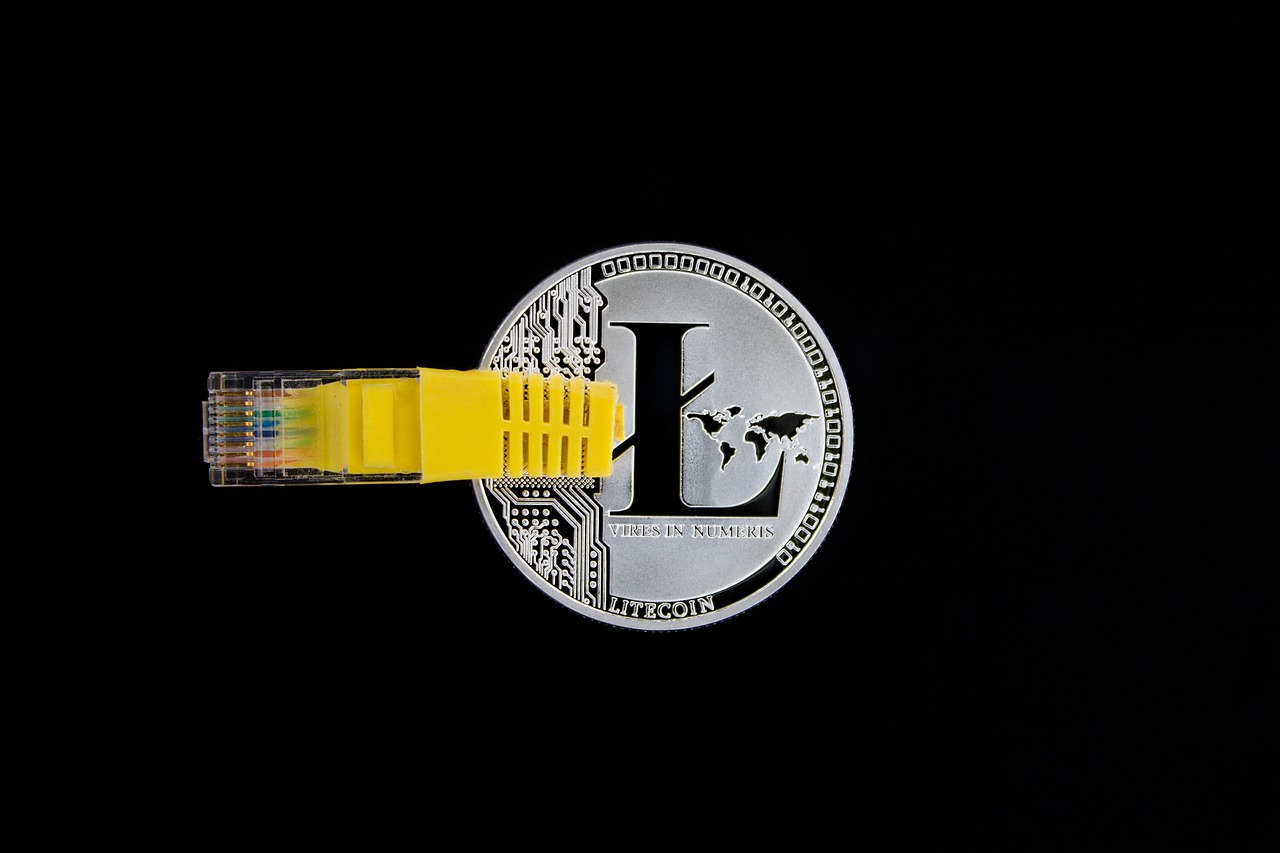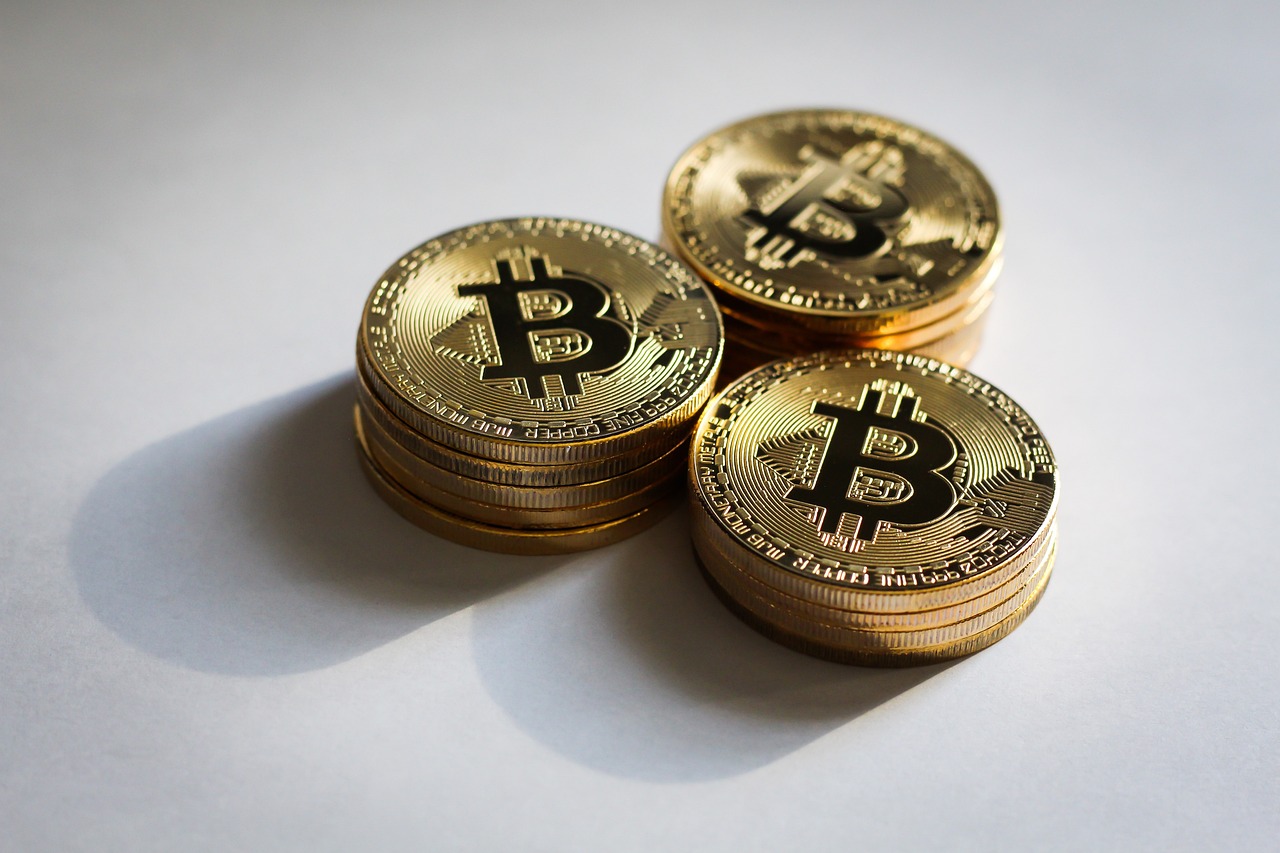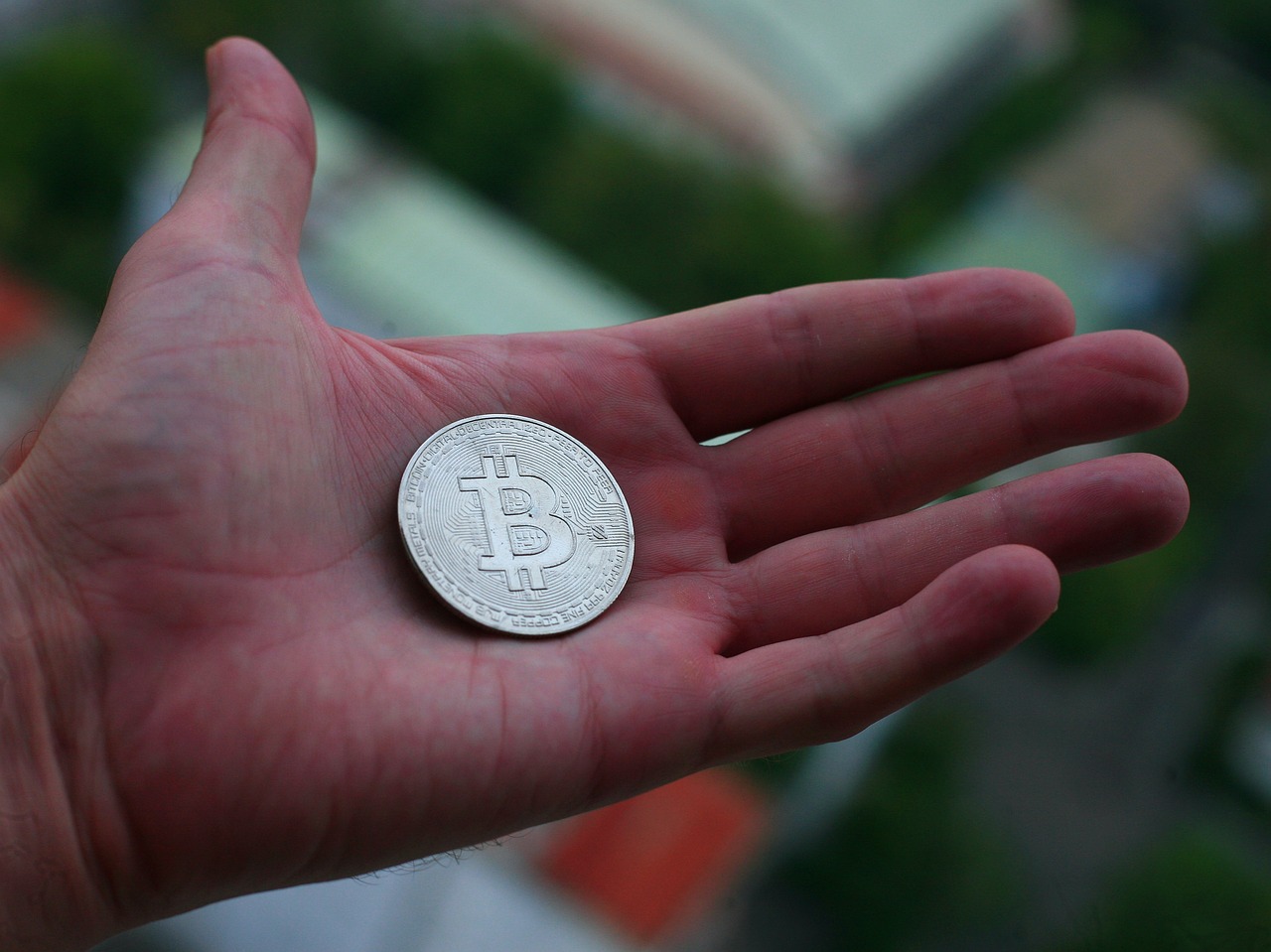Regulatory Challenges Facing Crypto Exchanges
The world of cryptocurrency is akin to the Wild West; it's exciting, full of potential, yet fraught with uncertainty. As digital currencies gain popularity, crypto exchanges find themselves navigating a complex maze of regulations that can feel overwhelming. From compliance issues to evolving laws, these challenges can significantly impact their operations and growth. So, what exactly are these regulatory hurdles that crypto exchanges face, and how do they manage to stay afloat amidst the chaos? Let’s dive into the intricate landscape of regulations that define the crypto exchange environment.
When it comes to regulations, the approach varies dramatically from one country to another. Some nations embrace cryptocurrencies, while others impose strict bans. For instance, in the United States, the regulatory framework is fragmented, with different states having their own rules. Conversely, countries like Singapore and Switzerland have established comprehensive regulations that foster innovation while ensuring consumer protection. This disparity creates a patchwork of regulations that crypto exchanges must navigate if they wish to operate internationally. As they expand their services across borders, understanding and adapting to these diverse frameworks becomes crucial. The implications of non-compliance can be severe, including hefty fines and operational restrictions.
To operate legally, crypto exchanges must adhere to a set of stringent compliance obligations. Key among these are the Know Your Customer (KYC) and Anti-Money Laundering (AML) regulations. KYC requires exchanges to verify the identity of their users, while AML aims to prevent illicit activities through monitoring transactions. These regulations are essential for maintaining the integrity of the financial system, but they pose significant challenges for exchanges. Implementing robust KYC and AML processes can be both costly and time-consuming, often requiring advanced technology and dedicated personnel.
Obtaining the necessary licenses to operate a crypto exchange is no small feat. Each jurisdiction has its own licensing requirements, which can involve extensive documentation and a thorough review process. For many exchanges, this means navigating a bureaucratic labyrinth that can be both frustrating and expensive. The costs associated with obtaining licenses can vary significantly, depending on the country and the specific regulations in place. In some cases, exchanges may even need to partner with local entities to meet regulatory requirements, further complicating the process.
The licensing process doesn't just affect the initial setup of a crypto exchange; it can also have long-lasting implications for its operations. Many jurisdictions impose restrictions on the types of services that licensed exchanges can offer. For example, some may only allow trading of certain cryptocurrencies or limit the geographical areas in which the exchange can operate. These limitations can stifle growth and innovation, forcing exchanges to make difficult decisions about their business models and service offerings.
The stakes are high for crypto exchanges that fail to comply with regulatory requirements. The consequences can range from fines and legal action to severe reputational damage. In some instances, non-compliance can even lead to the suspension or revocation of licenses, effectively shutting down the exchange. This reality underscores the importance of staying informed about regulatory changes and investing in compliance measures to mitigate risks.
Taxation is another significant challenge facing crypto exchanges. Different countries have varying approaches to taxing cryptocurrency transactions, which can create confusion and complications for exchanges. For instance, while some nations treat cryptocurrencies as assets subject to capital gains tax, others may classify them as currency, leading to different tax obligations. This inconsistency complicates reporting and compliance for exchanges, as they must ensure they are adhering to the tax laws of each jurisdiction they operate in.
As the crypto market matures, there is a growing emphasis on consumer protection regulations. These laws aim to safeguard investors and ensure fair practices within exchanges. Regulatory bodies are increasingly focusing on preventing fraud and providing transparency to consumers. This shift is essential for building trust in the crypto ecosystem, as many potential investors remain wary of the risks associated with trading digital currencies.
To protect consumers, crypto exchanges must implement stringent security measures. This includes safeguarding user data, preventing hacking attempts, and ensuring that transactions are secure. Regulatory measures often require exchanges to adopt advanced security protocols, which can be challenging and costly. However, the cost of failing to protect users can be even higher, as breaches can lead to significant financial losses and irreparable damage to an exchange's reputation.
Looking ahead, the regulatory landscape for crypto exchanges is likely to continue evolving. We can expect to see potential changes in legislation as governments seek to adapt to the rapidly changing digital economy. The role of technology in compliance is also set to increase, with innovations such as blockchain analytics playing a critical part in monitoring transactions and ensuring adherence to regulations. Crypto exchanges that proactively prepare for these changes will be better positioned to thrive in this dynamic environment.
- What are the main regulatory challenges facing crypto exchanges? The main challenges include compliance with KYC and AML regulations, obtaining necessary licenses, and navigating taxation issues.
- How do different countries approach crypto regulation? Countries vary widely in their regulatory frameworks, with some embracing cryptocurrencies while others impose strict bans.
- What are the consequences of non-compliance for crypto exchanges? Non-compliance can result in fines, legal action, and reputational damage, potentially leading to the suspension of operations.
- What measures are in place for consumer protection? Regulatory bodies are increasingly focusing on consumer protection, requiring exchanges to implement security measures and ensure transparency.

Global Regulatory Landscape
The for cryptocurrency exchanges is as diverse as the currencies themselves. Different countries have taken varying approaches to regulate this burgeoning market, leading to a complex web of rules and policies that exchanges must navigate. For instance, while some nations have embraced cryptocurrencies, creating a friendly environment for innovation, others have imposed strict regulations or outright bans. This disparity poses significant challenges for exchanges operating on an international scale.
In the United States, the regulatory environment is fragmented, with multiple agencies involved, such as the Securities and Exchange Commission (SEC) and the Commodity Futures Trading Commission (CFTC). Each agency has its own set of rules, and the lack of a unified regulatory framework leaves many exchanges in a state of uncertainty. On the other hand, countries like Switzerland and Singapore have established clear guidelines that not only promote compliance but also foster innovation. These nations have recognized the potential of cryptocurrencies and have created regulatory frameworks that encourage growth while ensuring consumer protection.
As we look at the regulatory approaches around the world, it becomes clear that the implications for international operations can be profound. For example, an exchange based in one country may find itself at odds with regulations in another, making it difficult to offer services to a global audience. Consider the following table that summarizes the regulatory stance of various countries:
| Country | Regulatory Stance | Key Regulatory Body |
|---|---|---|
| United States | Fragmented; multiple agencies | SEC, CFTC |
| Switzerland | Proactive; supportive of innovation | FINMA |
| Singapore | Clear guidelines; promotes growth | MAS |
| China | Restrictive; severe bans | PBOC |
| Japan | Regulated; licensing required | FSA |
This table illustrates the stark contrast in regulatory approaches. Countries like China have taken a hardline stance against cryptocurrencies, creating an environment of fear and uncertainty for exchanges. In contrast, nations like Japan have embraced regulation as a way to legitimize the industry, requiring exchanges to obtain licenses to operate. This creates a safer environment for consumers but can also impose significant costs and compliance burdens on exchanges.
Moreover, the evolving nature of regulations means that exchanges must stay vigilant and adaptable. As governments worldwide continue to assess the impact of cryptocurrencies on their economies, the regulatory landscape is likely to change, sometimes rapidly. For instance, new legislation could emerge that either facilitates or complicates the operations of crypto exchanges, and keeping up with these changes is crucial for survival in this competitive market. This dynamic environment makes it essential for exchanges to have robust compliance frameworks and a deep understanding of the regulations in the jurisdictions they operate in.
In conclusion, the global regulatory landscape for crypto exchanges is a mosaic of opportunities and challenges. As exchanges seek to expand their reach, understanding the diverse frameworks that govern their operations is not just beneficial—it's essential. In this fast-paced world, the ability to adapt to regulatory changes can be the difference between thriving and merely surviving.

Compliance Requirements
In the rapidly evolving world of cryptocurrency, have become a crucial aspect for crypto exchanges. These requirements are not just bureaucratic hurdles; they are essential frameworks designed to ensure that exchanges operate within the law, protect consumers, and maintain the integrity of the financial system. One of the most significant compliance obligations that exchanges face is the implementation of Know Your Customer (KYC) and Anti-Money Laundering (AML) regulations. These regulations require exchanges to verify the identity of their users and monitor transactions for suspicious activity, which can be a daunting task.
The challenge lies in the fact that these requirements vary from country to country. For instance, while some jurisdictions may have stringent KYC protocols, others might adopt a more relaxed approach. This disparity creates a complex landscape for exchanges operating internationally. They must navigate a patchwork of regulations, which can lead to confusion and, at times, non-compliance. Failure to adhere to these regulations can result in severe penalties, including hefty fines and even the suspension of operations.
Moreover, the compliance process is not just a one-time effort; it requires continuous monitoring and updates as regulations evolve. Exchanges must invest in robust systems and technology to keep pace with changing laws. This often means hiring compliance officers, implementing advanced software solutions, and conducting regular audits. The costs associated with these compliance measures can be significant, especially for smaller exchanges trying to gain a foothold in the market.
To give you a clearer picture of the compliance landscape, here's a brief overview of some key compliance requirements:
| Compliance Requirement | Description |
|---|---|
| KYC | Verification of user identity through documents like passports or driver's licenses. |
| AML | Monitoring transactions for suspicious activity to prevent money laundering. |
| Transaction Reporting | Reporting large or unusual transactions to relevant authorities. |
| Data Protection | Ensuring user data is stored securely and in compliance with privacy laws. |
As we delve deeper into the compliance requirements, it's essential to recognize that these regulations are not merely obstacles. They are designed to foster trust and security in the crypto ecosystem. By adhering to these requirements, exchanges can build a reputation for reliability and safety, which is crucial for attracting and retaining customers in a market that is often viewed with skepticism.
In conclusion, while compliance can be a complex and costly endeavor for crypto exchanges, it is also an opportunity. By investing in compliance, exchanges can not only avoid legal pitfalls but also position themselves as trustworthy players in the market. This proactive approach will undoubtedly pay off in the long run, as consumers increasingly seek out secure and compliant platforms for their trading needs.
- What is KYC? KYC stands for Know Your Customer, a process used by financial institutions to verify the identity of their clients.
- Why is AML important? Anti-Money Laundering regulations are critical for preventing illegal activities such as money laundering and terrorist financing.
- How do compliance requirements vary by country? Different countries have different regulations regarding KYC and AML, which can affect how exchanges operate globally.
- What are the consequences of non-compliance? Failing to comply with regulations can lead to fines, legal action, and reputational damage for exchanges.

Licensing and Registration
When it comes to operating a crypto exchange, licensing and registration are not just bureaucratic hurdles; they are essential components that can determine the very survival of the business. Each country has its own set of rules, which can often feel like navigating a labyrinth. For instance, in the United States, exchanges must comply with both federal and state regulations, which can vary significantly from one state to another. This patchwork of laws can create a daunting landscape for new players trying to enter the market.
Obtaining a license is often a lengthy and expensive process. Many jurisdictions require extensive documentation to prove that the exchange has the necessary financial backing, security measures, and operational protocols. This can include everything from financial audits to background checks on key personnel. In some cases, the costs can reach hundreds of thousands of dollars, which is a significant barrier for startups looking to make their mark in the crypto world.
Moreover, the requirements for licensing can change rapidly, as governments adapt to the evolving nature of cryptocurrency. For example, a country may initially have a lenient stance on crypto exchanges, only to tighten regulations as the market matures or as incidents of fraud come to light. This unpredictability can leave exchanges in a precarious position, having invested time and money into compliance only to find that new regulations have rendered their efforts obsolete.
The implications of licensing extend beyond just legal compliance. A licensed exchange often enjoys a level of credibility and trust that unlicensed platforms do not. Customers are more likely to trade on a platform that can demonstrate compliance with local laws, as it provides an added layer of security and assurance. Conversely, operating without a license can lead to severe penalties, including hefty fines, forced closure, or even criminal charges against the operators.
To illustrate the differences in licensing requirements across various jurisdictions, consider the following table:
| Country | Licensing Authority | Key Requirements | Cost |
|---|---|---|---|
| United States | FinCEN / State Authorities | KYC, AML, Financial Audits | $100,000+ |
| United Kingdom | FCA | AML Compliance, Financial Stability | £5,000+ |
| Singapore | Monetary Authority of Singapore | Licensing Application, Compliance Program | S$50,000+ |
| Japan | Financial Services Agency | Security Measures, Financial Health | ¥10,000,000+ |
In summary, the licensing and registration process for crypto exchanges is fraught with challenges that can impact their operational capabilities and market entry. As the regulatory landscape continues to evolve, exchanges must remain vigilant and adaptable, ensuring they not only meet current requirements but are also prepared for future changes. The road may be rocky, but for those willing to invest the time and resources, the rewards can be substantial.
- What is the importance of licensing for crypto exchanges? Licensing helps establish credibility and trust with users, ensuring compliance with local laws.
- How much does it typically cost to obtain a license? Costs can vary widely depending on the jurisdiction, often ranging from thousands to hundreds of thousands of dollars.
- Can an unlicensed exchange operate legally? No, operating without a license can lead to severe penalties, including fines and closure.

Impact of Licensing on Operations
Licensing is more than just a bureaucratic hurdle for crypto exchanges; it serves as a critical framework that shapes their operational landscape. Imagine trying to navigate a bustling city without a map—this is akin to how exchanges operate without the appropriate licenses. Each jurisdiction has its own set of rules, and understanding these can be the difference between thriving and merely surviving in the competitive crypto market.
When a crypto exchange secures a license, it often gains a stamp of legitimacy that can enhance its reputation among users and investors. However, the journey to obtaining this license is fraught with challenges. For example, exchanges may face extensive documentation requirements, background checks, and even financial audits. The costs associated with these processes can be substantial, and many startups struggle to meet them. In fact, a recent survey indicated that over 60% of new exchanges cite licensing costs as a significant barrier to entry.
Once licensed, the operational capabilities of a crypto exchange are directly affected. For instance, some licenses may restrict the types of cryptocurrencies the exchange can list or the geographical areas it can serve. This limitation can hinder growth opportunities, especially in a rapidly evolving market where consumer preferences shift almost overnight. An exchange that is unable to adapt its offerings due to licensing constraints may find itself outpaced by more agile competitors.
Moreover, the impact of licensing extends to how exchanges interact with their customers. For example, licensed exchanges often have to implement rigorous Know Your Customer (KYC) and Anti-Money Laundering (AML) policies, which can create friction in the onboarding process for new users. While these regulations are essential for preventing fraud and ensuring compliance, they can also deter potential customers who prefer a more streamlined experience. Therefore, the balance between compliance and user experience is a delicate one that exchanges must navigate carefully.
In summary, the impact of licensing on the operations of crypto exchanges is multifaceted. It influences everything from market access to customer interactions, and the challenges associated with obtaining and maintaining licenses can significantly shape an exchange's strategic direction. As the regulatory landscape continues to evolve, exchanges must remain agile, adapting to new requirements while striving to meet the demands of their users.
- What are the main licensing requirements for crypto exchanges?
Licensing requirements vary by jurisdiction, but typically include compliance with KYC and AML regulations, financial audits, and proof of operational integrity. - How does licensing affect the geographical reach of an exchange?
Licensing can limit an exchange's ability to operate in certain countries, depending on local regulations and the specific license obtained. - What are the consequences of operating without a license?
Operating without a license can lead to hefty fines, legal action, and significant reputational damage, making it crucial for exchanges to secure the proper licenses.

Consequences of Non-Compliance
In the fast-paced world of cryptocurrency, non-compliance with regulatory requirements can spell disaster for exchanges. Imagine investing your time, money, and resources into building a platform, only to see it crumble due to legal repercussions. The consequences of failing to adhere to regulations can be severe and multifaceted, impacting not only the exchange itself but also its users and the broader crypto ecosystem.
First and foremost, one of the most immediate repercussions of non-compliance is the threat of hefty fines and penalties. Regulatory bodies worldwide, such as the Financial Crimes Enforcement Network (FinCEN) in the U.S. or the Financial Conduct Authority (FCA) in the UK, have the authority to impose significant financial sanctions on exchanges that do not follow the established rules. These fines can range from thousands to millions of dollars, depending on the severity of the violation.
Additionally, exchanges may face legal action from regulatory authorities, which can lead to lengthy court battles. These legal disputes not only drain financial resources but also divert attention from core business operations. The legal costs can accumulate quickly, and the uncertainty surrounding the outcome can create a cloud of instability over the exchange’s future. For many startups, this could mean the end of their journey before it even begins.
Moreover, the damage to a company’s reputation cannot be overstated. In the digital age, where information spreads like wildfire, news of regulatory violations can tarnish an exchange's image almost instantaneously. Users may lose trust, and potential customers could shy away from engaging with a platform that has a cloud of controversy hanging over it. This loss of trust can lead to a significant drop in user engagement and trading volume, ultimately impacting the exchange's bottom line.
In some cases, non-compliance can lead to the suspension or revocation of licenses. Without the necessary licenses, exchanges may find themselves unable to operate legally, forcing them to shut down or significantly limit their services. This can also lead to massive layoffs and financial loss for employees and stakeholders involved.
Furthermore, the implications of non-compliance extend beyond immediate financial and operational impacts. They can also lead to increased scrutiny from regulators in the future. Once an exchange has been flagged for non-compliance, it may find itself under a microscope, facing more rigorous audits and oversight. This can make it challenging to innovate or expand, as every move is watched closely by regulators.
In conclusion, the consequences of non-compliance in the cryptocurrency exchange space are profound and can have a cascading effect on the business. From financial penalties and legal battles to reputational damage and operational restrictions, the risks are substantial. For exchanges looking to thrive in this dynamic environment, adherence to regulatory standards is not just a legal obligation; it is a fundamental component of sustainable growth and success.
- What are the main consequences of non-compliance for crypto exchanges? Non-compliance can lead to fines, legal action, reputational damage, and license revocation.
- How can exchanges ensure compliance with regulations? By implementing robust compliance programs, conducting regular audits, and staying updated with regulatory changes.
- What should a crypto exchange do if it faces legal action? It is crucial to seek legal counsel and address the issues promptly to mitigate potential damage.
- Can non-compliance affect user trust? Absolutely, users are likely to withdraw their support if they feel an exchange is not operating legally or ethically.

Taxation Issues
Taxation in the realm of cryptocurrency is like navigating a labyrinth—complex, often confusing, and filled with unexpected twists and turns. For crypto exchanges, understanding the taxation landscape is crucial not just for compliance, but also for strategic planning. Different countries have adopted varying approaches to taxing cryptocurrency transactions, which can create significant challenges for exchanges operating internationally. For instance, in some jurisdictions, cryptocurrencies are treated as assets, while in others, they are viewed as currency. This discrepancy can lead to a patchwork of regulations that exchanges must navigate, making it essential for them to have a robust understanding of the local laws wherever they operate.
One of the primary taxation challenges crypto exchanges face is the need to accurately report transactions. Each trade, whether a buy, sell, or exchange, can trigger a taxable event. This means that exchanges must not only track the value of cryptocurrencies at the time of each transaction but also maintain detailed records for reporting purposes. The burden of this record-keeping can be overwhelming, especially for exchanges with high transaction volumes. Moreover, the lack of standardized regulations across jurisdictions complicates matters further, as exchanges may find themselves subject to different reporting requirements based on where their users are located.
To illustrate the complexity of taxation for crypto exchanges, consider the following table that summarizes how different countries approach crypto taxation:
| Country | Tax Treatment | Reporting Requirements |
|---|---|---|
| United States | Cryptocurrency treated as property | Capital gains tax reporting |
| Germany | Cryptocurrency treated as currency | No tax if held for over a year |
| Japan | Cryptocurrency treated as assets | Income tax on gains |
| United Kingdom | Cryptocurrency treated as property | Capital gains tax reporting |
This table highlights just a few of the diverse taxation approaches that crypto exchanges must contend with. Additionally, the evolving nature of regulations means that exchanges need to stay informed about potential changes that could impact their tax obligations. Failure to comply with tax regulations can lead to severe penalties, including fines and legal repercussions, which can harm the exchange's reputation and operational viability.
Moreover, as governments around the world continue to refine their tax policies regarding cryptocurrencies, exchanges must also be prepared for increased scrutiny. Regulatory bodies are becoming more vigilant in their efforts to ensure compliance, which means that exchanges must invest in robust accounting systems and perhaps even seek the expertise of tax professionals who specialize in cryptocurrency. This investment is not just about avoiding penalties; it’s about building trust with users who are increasingly concerned about the legitimacy and security of their investments.
In conclusion, taxation issues present a significant hurdle for crypto exchanges. Understanding the diverse tax treatments across jurisdictions, maintaining accurate records, and complying with evolving regulations are all critical to navigating this complex landscape. As the crypto market continues to grow, so too will the importance of addressing these taxation challenges head-on.
- What is the main taxation issue for crypto exchanges? The main issue is the lack of uniform regulations across different countries, leading to complex reporting and compliance requirements.
- How do different countries tax cryptocurrency? Countries vary in their treatment of cryptocurrencies, with some treating them as property and others as currency, affecting how gains are taxed.
- What can happen if a crypto exchange fails to comply with tax regulations? Non-compliance can lead to fines, legal actions, and damage to the exchange's reputation.

Consumer Protection Regulations
In an era where digital assets are becoming increasingly mainstream, are more crucial than ever. As crypto exchanges continue to grow, so does the need to ensure that investors are safeguarded against potential risks. The rise of cryptocurrencies has brought with it a myriad of challenges, particularly concerning the protection of consumers who may not fully understand the complexities of this new financial landscape. Just like a toddler learning to walk, consumers need a safety net to prevent them from falling into the pitfalls of fraud, hacking, and market volatility.
Regulators worldwide are recognizing this need, leading to the establishment of various consumer protection frameworks aimed at ensuring fair practices within crypto exchanges. These regulations often focus on transparency, accountability, and the ethical treatment of customers. For instance, many jurisdictions are now requiring exchanges to provide clear information about their fees, services, and the risks associated with investing in cryptocurrencies. This transparency is akin to having a clear map before embarking on a journey; it equips consumers with the knowledge they need to navigate the complexities of the crypto world.
Moreover, consumer protection regulations are evolving to address the unique challenges posed by the crypto environment. Exchanges are being mandated to implement stringent security measures to protect users from fraud and cyberattacks. This includes employing advanced technologies such as multi-factor authentication, encryption, and regular security audits. The goal is to create a secure trading environment where consumers can feel confident that their assets are safe. Think of it as a digital vault where your valuables are protected by layers of security.
In addition to security measures, regulators are also focusing on providing mechanisms for dispute resolution. Consumers need assurance that if something goes wrong—be it a transaction error or a security breach—they have a clear path to seek redress. This can include establishing a formal complaint process or providing access to independent mediators. Just like having a reliable customer service team in a retail store, these measures help build trust between exchanges and their users.
However, the implementation of consumer protection regulations is not without its challenges. Many crypto exchanges operate in a global market, which means they must navigate a patchwork of regulations that can vary significantly from one country to another. This can lead to confusion and inconsistencies in how consumer protections are applied. For example, while some countries may have robust regulations in place, others may lack any formal framework, leaving consumers vulnerable. The table below illustrates the varying approaches to consumer protection regulations in different regions:
| Region | Regulatory Approach | Key Features |
|---|---|---|
| United States | State-by-State Regulation | Varied regulations, emphasis on KYC and AML |
| European Union | Proposed MiCA Regulation | Standardized rules for transparency and investor protection |
| Asia (e.g., Singapore) | Progressive Regulation | Focus on innovation with consumer safeguards |
| Latin America | Emerging Regulations | Developing frameworks with varying degrees of protection |
As the regulatory landscape continues to evolve, it is crucial for crypto exchanges to stay ahead of the curve. By prioritizing consumer protection, they can not only comply with regulations but also foster trust and loyalty among their users. In a world where trust is paramount, exchanges that demonstrate a commitment to protecting their customers will likely stand out in a crowded marketplace. Just like a lighthouse guiding ships safely to shore, effective consumer protection measures can illuminate the path for investors navigating the turbulent waters of cryptocurrency.

Security and Fraud Prevention
In the ever-evolving world of cryptocurrency, the importance of security and fraud prevention cannot be overstated. With the rise of digital currencies, crypto exchanges have become prime targets for hackers and fraudsters looking to exploit vulnerabilities. Imagine a bustling marketplace where every vendor is trying to sell their goods, but there are thieves lurking around every corner. This scenario is not far from the reality that crypto exchanges face daily. As such, regulatory measures designed to protect consumers are becoming increasingly stringent.
Crypto exchanges are required to implement a variety of security protocols to safeguard user data and funds. These measures often include multi-factor authentication, encryption, and regular security audits. However, the challenge lies not only in putting these systems in place but also in ensuring that they are effective against the latest threats. Just like a fortress that needs constant upgrades to withstand new siege techniques, exchanges must stay ahead of cybercriminals.
Moreover, regulatory bodies are beginning to mandate specific security practices. For instance, many jurisdictions now require exchanges to conduct thorough risk assessments and implement anti-fraud measures. These regulations aim to create a safer trading environment, but they also impose significant operational burdens on exchanges. The costs associated with compliance can be overwhelming, particularly for smaller platforms that may lack the resources of larger competitors.
To illustrate the impact of these regulations, consider the following table that outlines some common security measures and their associated challenges:
| Security Measure | Description | Challenges |
|---|---|---|
| Multi-Factor Authentication (MFA) | Requires users to provide two or more verification factors to gain access. | User resistance and implementation costs. |
| Encryption | Protects data by converting it into a secure format. | Complexity of managing encryption keys. |
| Regular Security Audits | Involves evaluating the security of systems and processes. | High costs and potential downtime. |
Another significant aspect of security and fraud prevention is the need for comprehensive employee training. Staff members must be well-versed in the latest security protocols and aware of potential threats. Think of it as training a team of lifeguards at a busy beach; they need to be vigilant and prepared to react quickly to any signs of trouble. In the crypto world, this means recognizing phishing attempts, detecting unusual activity, and understanding how to respond effectively.
Furthermore, the rapid pace of technological advancement means that exchanges must continuously adapt their security strategies. New technologies, such as blockchain analytics, are being developed to help track illicit activities and identify potential fraud. However, integrating these technologies can be a double-edged sword; while they enhance security, they also require significant investment and expertise.
In conclusion, the landscape of security and fraud prevention in the crypto exchange industry is complex and fraught with challenges. As regulations tighten and the threat of cybercrime looms large, exchanges must prioritize their security measures while balancing compliance costs and operational efficiency. Just as a ship must navigate through treacherous waters, crypto exchanges must steer through the regulatory seas to ensure the safety of their users and their own survival in this competitive market.
- What are the most common security threats faced by crypto exchanges?
The most common threats include hacking attempts, phishing scams, and insider fraud.
- How can users protect themselves when trading on crypto exchanges?
Users can employ strong passwords, enable multi-factor authentication, and be cautious of unsolicited communications.
- What role do regulatory bodies play in ensuring security?
Regulatory bodies establish guidelines and requirements for security measures that exchanges must implement to protect consumers.

Future Regulatory Trends
The world of cryptocurrency is in a constant state of flux, and as we look to the future, the regulatory landscape is poised for significant evolution. With governments and regulatory bodies around the globe grappling with how to manage the rapid growth of digital assets, we can expect to see a series of trends that will shape the way crypto exchanges operate. One of the most pressing issues is the potential for standardization of regulations across different jurisdictions. As countries recognize the global nature of cryptocurrency, there may be a push towards harmonizing regulatory frameworks, which could simplify compliance for exchanges operating internationally.
Furthermore, the role of technology in compliance is set to expand dramatically. Innovations like blockchain analytics tools and artificial intelligence will likely become integral in helping exchanges meet regulatory requirements. These technologies can assist in monitoring transactions for suspicious activity, ensuring adherence to Know Your Customer (KYC) and Anti-Money Laundering (AML) policies. By automating these processes, exchanges can not only enhance their compliance efforts but also improve operational efficiency.
Another trend to watch is the increasing focus on consumer protection. As more individuals invest in cryptocurrencies, regulators are likely to implement measures aimed at safeguarding investors from fraud and market manipulation. This could lead to stricter rules regarding transparency and disclosure, ensuring that exchanges provide clear information about the risks involved in trading cryptocurrencies. Moreover, we might see the introduction of mandatory insurance for consumer funds held on exchanges, a move that could boost investor confidence.
In addition to these trends, we can anticipate a greater emphasis on environmental sustainability in the crypto space. As the conversation around climate change intensifies, regulators may introduce guidelines that require exchanges to disclose their environmental impact and adopt sustainable practices. This shift could influence the types of cryptocurrencies that gain traction in the market, as projects that prioritize eco-friendliness may be favored over those with high energy consumption.
Lastly, the future of crypto regulation will also hinge on the evolving relationship between traditional financial institutions and the crypto sector. As banks and other financial entities begin to embrace cryptocurrency, we may see a wave of new regulations aimed at integrating digital assets into the existing financial framework. This could lead to collaborative efforts between regulators and exchanges to develop best practices that promote innovation while ensuring a stable financial environment.
In conclusion, the regulatory landscape for crypto exchanges is on the brink of transformation. As we move forward, stakeholders must remain vigilant and adaptable, ready to navigate the complexities of compliance in an ever-changing environment. The future holds both challenges and opportunities, and how exchanges respond to these regulatory trends will play a crucial role in their success.
- What are the main regulatory challenges faced by crypto exchanges?
Crypto exchanges often grapple with compliance requirements such as KYC and AML regulations, licensing processes, and the need for consumer protection. - How do different countries regulate cryptocurrency?
Each country has its own regulatory framework, which can vary significantly, affecting how exchanges operate internationally. - What impact does licensing have on crypto exchanges?
Licensing can limit the services offered by exchanges and their geographical reach, impacting growth potential. - What are the consequences of non-compliance?
Failing to comply with regulations can lead to fines, legal action, and severe reputational damage for exchanges.
Frequently Asked Questions
- What are the main regulatory challenges facing crypto exchanges?
The main regulatory challenges include navigating diverse regulations across different countries, ensuring compliance with Know Your Customer (KYC) and Anti-Money Laundering (AML) laws, and obtaining the necessary licenses to operate legally. Each jurisdiction has its own set of rules, making it complex for exchanges to maintain compliance while expanding their services globally.
- How do compliance requirements impact crypto exchanges?
Compliance requirements can significantly impact crypto exchanges by adding operational costs and complexities. For instance, the need to implement KYC and AML processes can require substantial resources, from technology investments to employee training. Additionally, non-compliance can lead to severe penalties, including fines and legal action, which can tarnish an exchange's reputation.
- What is the process for licensing a crypto exchange?
Licensing a crypto exchange typically involves applying for regulatory approval in the jurisdiction where the exchange intends to operate. This process can vary greatly depending on local laws and may require detailed documentation, background checks, and proof of financial stability. The costs associated with obtaining a license can also be significant, often deterring smaller exchanges from entering the market.
- What are the consequences of non-compliance for crypto exchanges?
Non-compliance can lead to a range of serious consequences for crypto exchanges. These may include hefty fines imposed by regulatory authorities, legal actions that could result in the suspension of operations, and irreparable damage to the exchange's reputation. Such repercussions can deter investors and users, ultimately impacting the exchange's profitability and growth.
- How are cryptocurrency transactions taxed in different countries?
Taxation of cryptocurrency transactions varies widely across countries. Some jurisdictions treat cryptocurrencies as property, subjecting them to capital gains tax, while others may classify them as currency, leading to different tax implications. This inconsistency creates challenges for exchanges in reporting transactions and ensuring compliance with local tax laws.
- What measures are in place for consumer protection in the crypto space?
Consumer protection regulations in the crypto space are increasingly focused on safeguarding investors from fraud and ensuring fair practices within exchanges. These measures may include requirements for transparency in fees, security protocols to protect user funds, and mechanisms for dispute resolution. As the industry evolves, regulators are likely to implement even stricter consumer protection laws.
- What security measures must crypto exchanges implement to prevent fraud?
Crypto exchanges are required to implement robust security measures to protect against fraud and hacking. This includes using encryption for data protection, two-factor authentication for user accounts, and regular security audits to identify vulnerabilities. Additionally, exchanges must have protocols in place for responding to security breaches and notifying affected users.
- What future regulatory trends can we expect in the crypto industry?
Future regulatory trends in the crypto industry may include more standardized regulations across countries, increased scrutiny of exchanges, and the integration of advanced technologies for compliance, such as blockchain analytics tools. As the market matures, exchanges will need to stay ahead of these trends to ensure compliance and maintain their competitive edge.



















